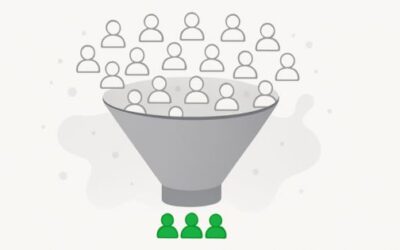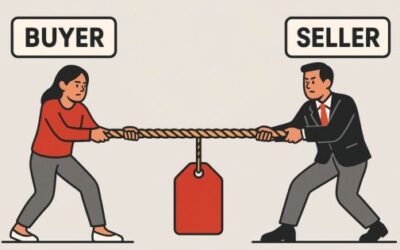Welcome to Mavens of Modern Sales, where we take a deep dive with the sales leaders pulling sales teams in the 21st century to get their insights on leadership, strategy, industry trends, and more.
This week we talked to Lindsey Boggs, VP Sales Development & Enablement at Glassbox.
We’ve heard outbound is dead, cold email is dead, cold calling is dead. You said earlier this year that cold calling is alive and well. What are your teams doing differently that makes them successful when so many others have seemingly given up?
While it’s true that many believe cold calling and outbound strategies are no longer effective, our team’s success comes down to a few key factors that set us apart:
- Data-Driven Targeting: We don’t just pick up the phone and call anyone. We use data and technology to ensure we’re reaching out to the right people at the right time. Intent data, industry-specific insights, and CRM tools help us focus our efforts on high-probability leads.
- Personalization at Scale: WARM calling. We ensure our SDRs are highly trained in delivering personalized messages that resonate with the specific pain points or goals of the person on the other end. It’s not a script, it’s a conversation tailored to the prospect
- Continuous Learning and Adaptation: Our team is always iterating on what works and what doesn’t. We listen to calls, review objections, and test different approaches so we can continuously improve.
- Human Connection: In an era of automation and emails, a live voice can create a personal connection that cuts through the noise. Prospects are bombarded with digital messages, but a well-executed cold call can stand out. We focus on providing value early in the conversation, listening carefully, and creating a genuine dialogue.
- Multi-Channel Approach: While cold calling is a core strength, it’s part of a larger outbound strategy that includes email, video, LinkedIn, LI voice notes, gifting, and personalized outreach across multiple platforms. This multi-channel approach ensures our message reaches prospects in ways that are most convenient for them.
- Social Selling: Turning a call warm involves researching the prospect prior to, and commenting on their posts, engaging with their posts, so that way when the SDR calls the prospect, it’s a familiar name – not so cold.
We’ve modernized our approach with data, personalization, and a deep focus on human connection.
You’ve recently taken on a new team, understanding all the changes in sales today, from buyers not picking up the phone, teams not making quota, longer sale cycles and decreased win rates, are you doing anything unique or different than you’ve done in the past to overcome these selling challenges?
The sales landscape has changed dramatically in the past 5 years and as a result, my approach has evolved in key ways to address the challenges of lower engagement, extended sales cycles, and changing buyer behavior.
- Focusing on Buyer-Centric Strategies: Modern buyers are more informed and self-directed. To respond to this, we’ve shifted from a traditional pitch approach to a buyer-centric model. My team is trained to meet buyers where they are in their journey. We’re focusing more on education and insight, using data to understand the buyer’s pain points before reaching out, so the conversation feels relevant and value-driven from the start.
- Leveraging Advanced Technology and AI: Today’s SDRs need the right tools to be successful. We’ve heavily invested in AI-driven platforms for lead scoring, intent data, and predictive analytics. This ensures that my team is reaching out to prospects who are showing strong buying signals, allowing us to prioritize the highest-value leads. We also use automation to handle repetitive tasks (Salesloft, in particular), so the team can focus more on building human connections.
- Personalization at Scale: We’ve doubled down on highly personalized messaging, using all available data to create tailored approaches for each prospect. Whether it’s through email, social selling, or warm calling, our outreach is hyper-personalized and built on real insights about the individual and their company.
- Sales Enablement and Continuous Training: Today’s sales cycles are longer and more complex, so we’ve invested heavily in sales enablement. My team undergoes regular training not just on product knowledge but on skills like consultative selling and handling objections early in the process. We also conduct real-time call reviews and peer coaching sessions to stay sharp and adapt to emerging trends quickly. Additionally, when an SDR is onboarded at Glassbox, they are given dozens of influencers and top leading sales coaches/enablers to follow on LinkedIn for tips and tricks – continuous learning is a huge focus of mine as a leader.
- Collaboration with Marketing: Alignment with marketing has never been more critical. We’ve created a tight feedback loop with our marketing team to ensure we’re targeting the right prospects with the right messaging, with ABM strategies. In many cases, we’re collaborating on content that SDRs can share with prospects at various stages of the funnel, helping to nurture relationships before they even enter the formal sales process.
- Mental Health: Sales teams today face more rejection than ever, and part of my role is fostering a culture of resilience and empathy. We’re focused on celebrating small wins, keeping morale high, and setting realistic expectations around longer sales cycles. Our team appreciates that I always lead with “family first” mentality.
While the fundamentals of selling haven’t changed, how we execute has. My focus is on empowering the team with the right tools, processes, and mindset to navigate today’s more complex and challenging sales environment.
There is a lot of movement in sales enablement today. What’s your take on the sales enablement’s role in sales orgs today?
In my opinion, enablement often gets put to the side by sales reps because they are “too busy” – I don’t take that as an excuse, so here is where I have been focusing heavily lately in my role as VP of Enablement at Glassbox:
- Strategic Partner to Sales: We align with leadership to ensure initiatives drive revenue, focusing on shortening cycles, improving win rates, and increasing quota attainment.
- Sales-Marketing Alignment: We bridge the gap between sales and marketing, ensuring sales teams have the right content and messaging at the right time.
- Data-Driven Insights: Enablement equips reps with actionable data to prioritize leads, surface relevant content, and make smarter decisions.
- Ongoing Training & Coaching: Beyond onboarding, we provide continuous, tailored training and real-time coaching to refine reps’ skills as markets evolve.
- Technology Adoption: We ensure seamless integration and adoption of sales tools, making sure technology enhances productivity.
- Driving Agility: Enablement helps teams stay agile, deploying new strategies and messaging quickly in response to market changes.
What’s the one part of sales most neglected by sales orgs that if fixed, could create the greatest opportunity for growth?
In my belief, the most neglected part of sales by many organizations is consistent, high-quality coaching. Many sales orgs prioritize initial training and onboarding, and hitting quotas, but ongoing coaching often falls by the wayside.
When done right, regular, tailored coaching not only improves rep performance but also drives long-term skill development, adaptability, and retention.
It ensures that reps continuously evolve, refine their approach, and close skill gaps. By investing more time and resources in structured, data-driven coaching, organizations can significantly boost win rates, reduce ramp time, and create a culture of continuous improvement.
One thing that I implement every quarter is a “Skills Gap Analysis.” I have each person in sales (AE, AM, SDR) fill out a survey on how they rank themselves on specific skills, and then have their manager rank them as well. Then, I take the delta of the Rep’s grade versus the Manager’s grade, and develop a plan for enablement for each person and put them in groups of similar strengths/opportunities.
It’s clear you’re a huge advocate for taking time to recharge and caring for yourself mentally. Is there something you do on a daily basis to press the reset button and stay sharp?
Thank you for asking this question because it is near and dear to my heart.
A couple of ways I prioritize mental health and lead by example include:
- Closing my computer at 5pm ET, no matter what
- Scheduling slacks to go out at a certain time, versus sending in real-time
- Example: I have team members in the UK – I don’t want them getting slack notifications from me at 8pm their time
- Preaching that “family first” is the utmost important has gone a long way with morale on my team
- Reminding the teams that “we are just selling software, no person’s life is at stake here.”
- Meditation for me personally is key. When I start my day with even a 5-minute meditation it can change my whole day for the better. Highly recommend the app called “Headspace”
- Have fun. At the end of the day, we are with our work people more than our families during the week, so having fun virtual events always livens things up and helps with resetting
- Zoom fatigue is real – taking 1:1s “on a walk” together has helped the team a lot with Zoom fatigue.
Lindsey Boggs is a seasoned senior sales leader with over a decade of experience with all types of companies from start-ups to Fortune 500 companies. Lindsey’s career in sales started at Bronto Software (an Oracle company) where she quickly rose to the top making President’s Club the first year and became a “social selling pioneer.”
In 2015, Lindsey wrote an article that went viral on LinkedIn and she was awarded the highest “Social Selling Index” score in the world and shared a stage with Shaquille O’Neal accepting her award in Las Vegas. After LinkedIn fame, Lindsey started her own consulting business where she taught companies from all over the world how to build their personal brands, how to prospect using LinkedIn, and personal branding.
Most recently, Lindsey was named a Top Influencer by Salesforce in 2021, 2022, 2023 and 2024.
In November of 2023, Lindsey took on a global sales leadership role at Glassbox, the leader in improving digital customer experiences. There, she leads a global sales development team, coaches modern ways of prospecting, and leads all of enablement for the commercial organization.
Lindsey also co-founded a nonprofit in mental health called UNCrushed.org where she helps tell people’s stories and help break the stigma of mental health, especially surrounding the workforce.
Lindsey has been a featured keynote speaker with Gary Vaynerchuk, Shaquille O’Neal, Andrew Huberman, and featured in Forbes, INC, spoken at Dreamforce, and featured in various other magazine and news articles around the globe for her unique prospecting efforts and personal branding tactics.
More than anything, Lindsey loves to coach and mentor others and provide tactics to help foster an environment to help further other people’s careers.



0 Comments